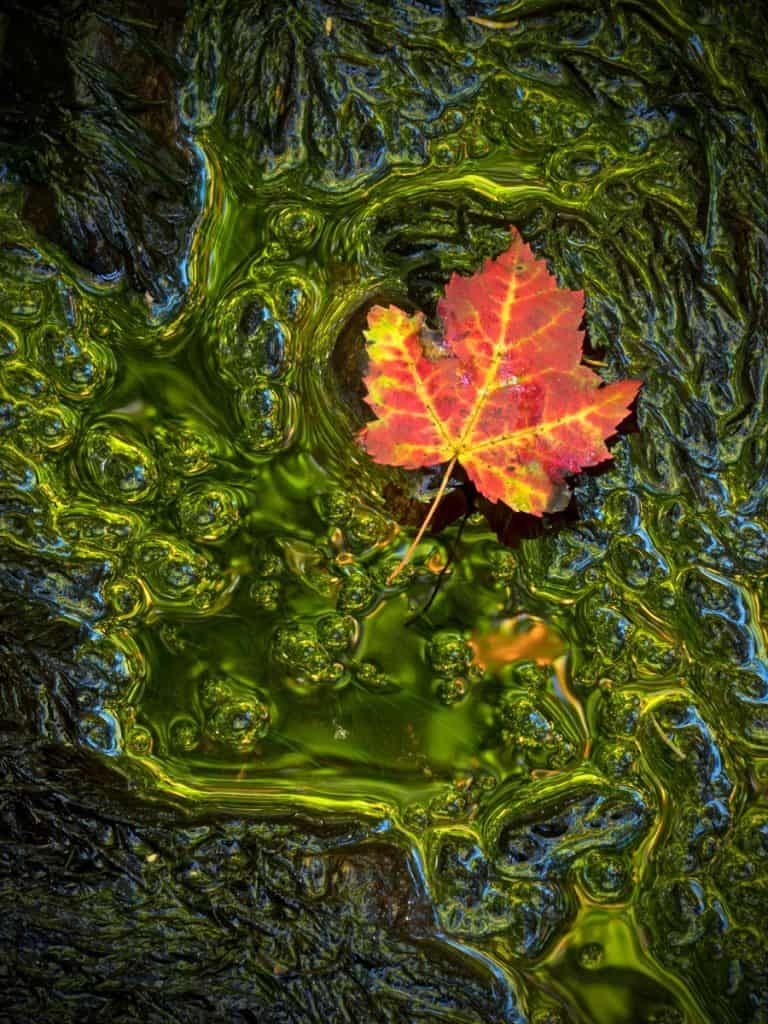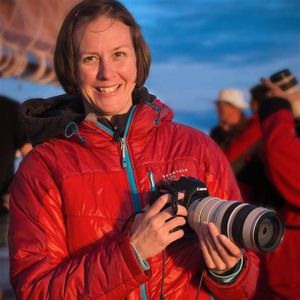
“The only true voyage of discovery, the only fountain of Eternal Youth, would be not to visit strange lands but to possess other eyes, to behold the universe through the eyes of another, of a hundred others, to behold the hundred universes that each of them beholds, that each of them is…”
~Marcel Proust
I stopped counting some years ago, but I’m certain I’ve spent over 450 days in Acadia National Park since November 2009. While it’s over 3,000 driving miles across the continent from my physical home in Arizona, I’ve spent enough days in Downeast Maine to call it my “photographic home” and have come to know it as well as a mother knows her own child.

Acadia welcomes me time after time by the sweet aroma of balsam fir, a gentle ocean breeze wrapping around my shoulders, and the strength of the speckled granite beneath my feet. It’s the place I feel most connected and intrigued with such a foreign, yet now familiar, landscape. It’s the place where I feel free, in the flow. It’s the place where I feel most like myself. Yet every time I visit, everything has changed. Everything is different.

When some people hear of my repetitive trips back East, I’m often asked, “With so many places in this world to see, why do you return to the same place over and over again?” Some add, “How do you avoid getting the same photographs every time?”
I first visited Acadia National Park in November 2009 after being selected as an Artist-in-Residence. I had applied for the residency because I had grown bored with photographing to what amounted to mostly iconic scenes in the desert southwest. I fell in love instantly with the beauty of the diverse Acadian landscape. So I applied for—and was granted—a second three-week residency in October 2010. After that, I started visiting the park on my own time and began leading photography workshops there. Then, I became the park’s first winter Artist-in-Residence in January 2013.
In the first week of my third residency, something had changed. My enthusiasm for the park shifted into discontent. I realized how tired I was of getting up again for sunrise on the coast or staying out late again for sunset where I’d use my 16mm lens, three-stop graduated neutral density filter, ISO 100, and f/22. My photography approach had become routine, my photographs safe, my artistic voice non-existent.

I wondered why I was so bored with making photographs in such a beautiful place. Had I really photographed everything there was to photograph in the park? However absurd the question was—and is—the answer was a resounding “No.” Despite my many visits, I had barely scratched the surface! I was bored because I had simply run out of ideas.
Still today, I keep returning to Acadia, typically two to three months a year. Over the past five years especially, as my knowledge of this magical park increases, my relationship deepens, and my connection intensifies, the portfolio of images I bring home from each trip gets better.
Here’s how I keep it fresh and continue to make unique and meaningful images in such a familiar place:
Trust and feed the creative process
Creativity experts don’t understand how the “aha” moment occurs, but they do agree on how to facilitate it with greater consistency. The Wallas model suggests the creative process consists of four stages (with my translation for my own photographic approach listed after the colon):
- Preparation: fill your brain with inspirational ideas and knowledge
- Incubation: visualize your photographs before you create them
- Illumination/inspiration: create an image when emotionally moved
- Verification: confirm whether your visual message came to life through your camera
I believe the ability to create expressive images depends upon us constantly collecting and expanding our perceptions of the world around us. Expressive images

Focus on becoming more aware (not photographing)
How well do you know someone when you meet them for the first time? As you interact with them over time, how does your relationship evolve? It’s the same thing with our landscape scenes and subjects. It takes a substantial amount of time and mental energy to build a deep understanding of a place—and first impressions aren’t always accurate.
To help continue to build your connection with a location, tap into mindfulness, which is “a mental state achieved by focusing one’s awareness on the present moment, while calmly acknowledging and accepting one’s feelings, thoughts, and bodily sensations” (dictionary.com).
Look around. Listen. Touch the rocks. Smell the air. Taste the seaweed. What do you observe right now? Every moment in time is unique. Every moment in time provides the opportunity to develop new perceptions, which will in turn fuel new photographic ideas. As Heraclitus said, “No man ever steps in the same river twice, for it’s not the same river and he’s not the same man.”
Release expectations and judgments

I also no longer evaluate and label a subject, scene, light, weather, etc. as “good” or bad.” I simply acknowledge its existence. I follow my curiosity, then ask, “To what am I responding? And why?” I determine what cards Mother Nature has dealt me and ask, “What can I create from what I’ve been given at this exact moment?”
Zen Buddhism has a term for this practice of freeing your mind of thought, expectation, and judgment. It’s called “mushin.”
Approach with a beginner’s mind
Zen Buddhism also encourages “
Ask yourself, “What else is it?”

When you were a child, did you look up at the clouds and see shapes, objects, and maybe even faces? Do you remember pointing and saying, “It looks just like a dragon!” or “Whoa! There’s Snoopy!”
The process of our brain creating structure when no structure actually exists is called “pareidolia.” The metaphorical associations we make stem from the existing knowledge we’ve collected and perceptions we’ve developed over our lifetimes. (Which is why it’s so important to fill your brain with knowledge and ideas! As author Jack Foster wrote in his book, How to Get Ideas, “After all, if ‘a new idea is nothing more or less than a new combination of elements,’ then it stands to reason that the person who knows more elements is more likely to come up with a new idea than a person who knows fewer old elements.”)
If you wish to be more expressive with your photography, I’d encourage you to see everything—clouds, trees, water, rocks, flowers—through this imaginative lens. When you spot something photogenic—landscape, macro, or something in between—ask yourself, “What else is it?” You answers will bring your existing knowledge and perceptions to the forefront and will help you establish an individual meaningful connection with the natural elements that excite you.
It’ll also help you express the extraordinary in the ordinary. As Antoine de Saint-Exupery said, “A rock pile ceases to be a rock pile the moment a single man contemplates it, bearing within him the image of a cathedral.”
Change your perspective
If you wish to see the land through a different lens, then change your lens, metaphorically-speaking. Try to see the world from another human’s perspective, perhaps through the eyes of a friend who hasn’t seen what you have. Alternatively, contemplate what it would be like to be the eagle that soars overhead, the otter frolicking in the surf, or the snake slithering across the moss. How do they see and experience the landscape? Extend your wonder into inanimate objects. If you had to sit still like that tree or rock has, what might you sense?
Ask “What if…”
“What if” questions can poke at our imaginations and lead to new ideas. What if you drove a new road, hiked a new trail, used a new lens, or used a filter in the opposite way it was intended. Play, screw up, learn! Camera manufacturers put the Delete button on the back of the camera for a reason! If you aren’t making a lot of mistakes, you probably aren’t pushing yourself hard or far enough.
Do something besides photography

Try new experiences outside of photography–both artistic and otherwise—to gain new inspiration. Taking adult ballet classes allowed me to compare receding waves to the slow, deliberate adagio I performed in the dance studio. Attempting to paint a rendition of Claude Monet’s “Water Lilies, 1916” at a local “Paint and Sip” event heightened my appreciation for lily pads I saw in Acadia’s ponds. Studying hydrology not only intrigues me, but it also helps me understand how water moves and enables me to find new subjects to photograph along Acadia’s coast. As Anton Chekhov said, “If you want to work on your art, work on your life.”
In between my trips to Acadia, I spend my in Arizona and in my other travels working on my life such that when I return to my favorite place, I have new internal material to play with. I read new books, I watch new documentaries, and I try new activities, all driven by my own curiosity to learn more, more, always more—and to feed the creative process.





